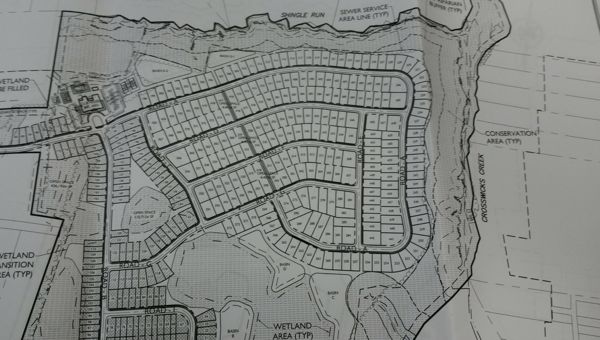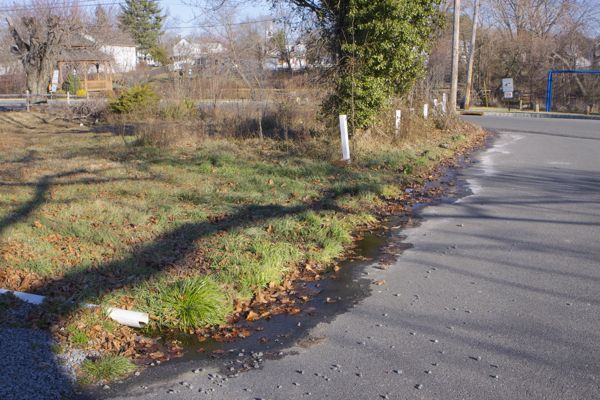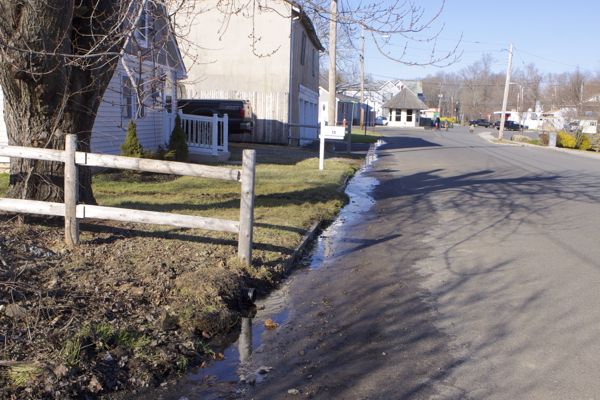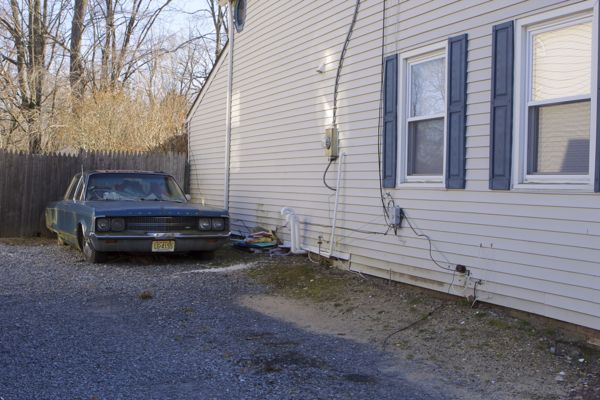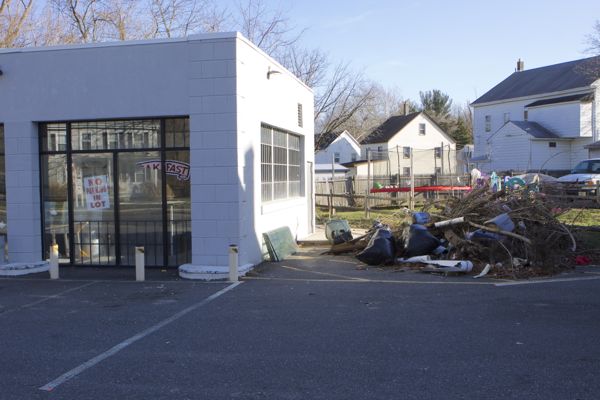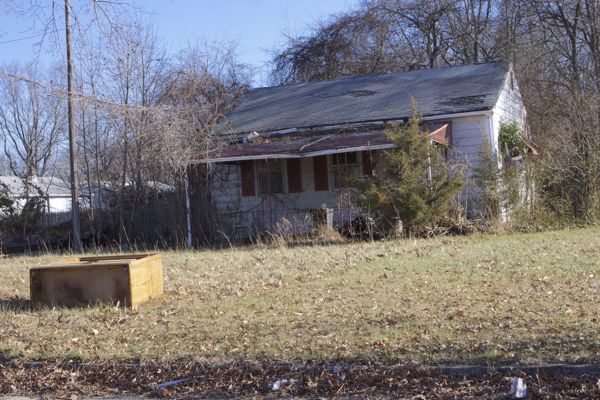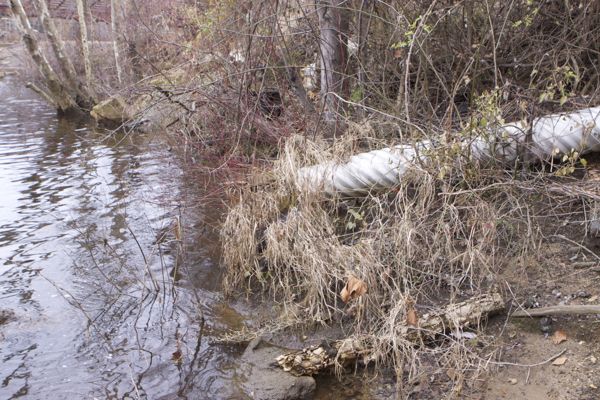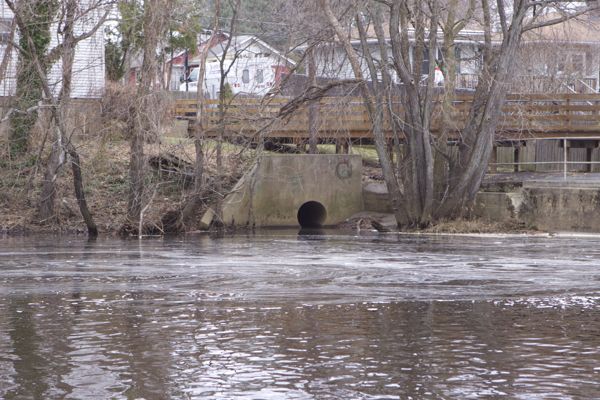The Department shall issue an individual freshwater wetlands or open water fill permit only if the regulated activity …
5. Will not cause or contribute to a violation of any applicable State water quality standard ~~~ (NJAC 7:7A-7.2)
A wonky but significant note this morning on a topic I’ve nibbled around the edges of in multiple posts.
After last Thursday’s Senate Committee release of the Legislative veto Resolution of DEP’s Flood Hazard rules and State House rally on clean water, I ran into Dale Florio and couldn’t help myself from taunting him on the pending victory on the veto. For those who don’t know him, meet Dale:
Of particular relevance and interest is the fact that:
Dale Florio, who served 18 years as the county GOP chair and remains influential in Republican politics there, is the founder and managing partner of Princeton Public Affairs, the lobbying firm that PennEast Pipeline hired in October to represent it.
Good old Dale wasted no time in a rapid and dismissive reply. He acknowledged the win, but quickly noted that the environmentalists “got one thing wrong in your framing: it has no effect on pipelines because they are exempt”.
Bingo! That’s what a good lobbyists does – gets right to the core issue and confidently spins it. Works every time with the press and legislators, who don’t know jack.
I shot back just as quickly: not so fast Dale, it’s not so simple. Pipelines are not exempt, at least from requirements to comply with the NJ surface water quality standards (NJAC 7:9:B) and the federal Clean Water Act. You’re highly vulnerable and you know it!
But Florio was half right – pipelines are exempt from the stormwater quality standards for post construction total suspended solids and nutrients and the disturbance restrictions in C1 buffers (NJAC 7:7A-5.2(d)).
And pipelines are given a pretty green light under the lax standards in the Flood Hazard permit rules(NJAC 7:13-8.10 & NJAC 7:13-11.9)
But Florio must know that pipelines are not exempt from and must meet the NJ State surface water quality standards (SWQS) (which are federally delegated and federally enforceable) and the federal Clean Water Act, including Section 401 which requires that DEP issue a “water quality certificate”.
Florio knows that DEP can not issue a permit or approval to a regulated activity that would “cause or contribute” to a violation of a surface water quality standard (SWQS). The SWQS include the antidegradation policies, the requirement to protect all existing and designated uses; the narrative policies; and the numeric criteria.
Florio must know that strict DEP enforcement of those SWQS led to the revocation of a NJPDES permit for a major Pulte Homes project in Clinton Township (Milligan Farms) along the Sidney Brook, a C1 stream due to (DEP @ page 22 – 23):
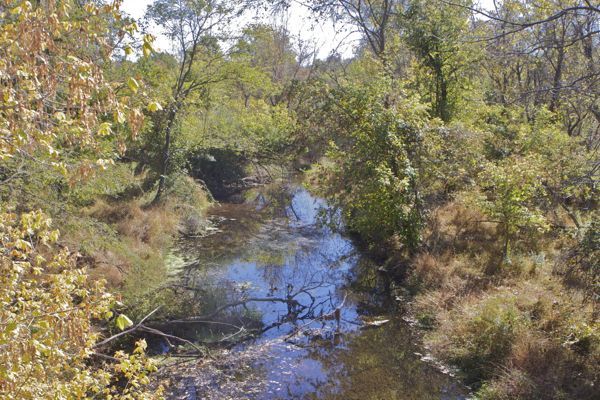
Sidney Brook, a clear, rocky tributary of the South Branch Raritan surrounded by a mosaic of successional fields, forested wetland, wet meadows, and cropland, provides excellent habitat for the State threatened wood turtle, and the bog turtle (C. muhlenbergii), listed by New Jersey as an endangered species and by the Federal government as a threatened species. Several wood turtles of various age classes have been documented along the Sidney Brook during limited surveys performed by the ENSP, which are excellent signs that a viable population is present within this drainage. Wood turtles are dependent on the Sidney Brook’s clear waters for foraging, breeding and hibernating. The complex of wetland and upland habitats surrounding the riparian corridor provides important nesting and foraging habitat for the wood turtle during the summer months.
Data on the health of the benthic macroinvertebrate community in Sidney Brook indicate that there is low stress (non-impaired) to the aquatic community. Additionally, an assessment of the in-stream habitat quality demonstrated exceptional habitat quality (optimal habitat) with 15 different fish species including adult brook trout. Some of the significant features present include stable banks with infrequent erosion, little sediment deposition, no channelization, a healthy riparian corridor, and a good mix of substrates including riffles, boulders, runs and pools.
Accordingly, the Department has determined that the Sidney Brook is a waterbody of “exceptional ecological significance” and is proposing to amend the antidegradation designation of the entire Brook from headwaters to its confluence with the South Branch Raritan River, including all tributaries from C2 to C1.
And the Windy Acres project along the South Branch of the Rockaway Creek is another example of this regulatory compliance risk: (DEP – @ page 23 – 24)
The South Branch Rockaway Creek provides exceptional wood turtle habitat. Wood turtles have been documented at several locations along the riparian corridor, suggesting that the entire stretch of the South Branch Rockaway Creek, from the headwaters to where it becomes impounded at Lake Cushetunk, is critical habitat for the species. The clear waters of the South Branch Rockaway Creek and the diverse structure of the riparian habitat and surrounding habitats, which includes fallow fields, woodlands, and wet meadows, are highly conducive to supporting a viable population of wood turtles. Based on the quality of the habitat and the high frequency of wood turtle sightings, the South Branch Rockaway Creek may support one the best wood turtle populations in the Piedmont physiographic province. The State is divided into four regions based on geological and land form characteristics, the piedmont physiographic province is one of them and runs roughly northeast to southwest from Trenton to Carteret.
Data on the health of the benthic macroinvertebrate community in South Branch Rockaway Creek indicate that there is low stress (non-impaired) to the aquatic community, while an assessment of the in-stream habitat quality demonstrated exceptional habitat quality (optimal habitat). The Department selected South Branch Rockaway Creek to be proposed for a higher antidegradation designation of C1 based upon the wood turtle survey and optimal habitat conditions. The 98-acre P. Lomar Nature Preserve could also benefit from the proposed C1 antidegradation designation by maintaining the existing excellent water quality. Accordingly, the Department has determined that the South Branch Rockaway Creek is a waterbody of “exceptional ecological significance” and is proposing to amend the antidegradation designation from headwaters to Lake Cushetunk, including all tributaries from C2 to C1.
Florio knows that the PennEast pipeline would cross scores of Category One stream segments with similar exceptional characteristics and a multitude of existing uses, the same ones that involved Milligan Farms and Windy Acres permits.
Florio knows that PennEast opponents can very easily review the DEP’s scientific basis for designating these streams as Category One and use that information in the permit and 401 WQC process, including Bob Martin’s DEP November 2012 Report that validated the C1 designation program (how long before DEP takes down those links? Folks should print out or download and copy/save those documents).
Florio knows that these NJ surface water quality standards are the basis for DEP’s issuance of the federally mandated water quality certificate, and that DEP is not preempted by FERC on this issue.
Florio knows that these compliance requirements are implicit and/or lack a specific implementing permit requirement in some cases, e.g. the Water Quality Planning Act and DEP regulations prohibit DEP from issuing any permit that is inconsistent with the Water Quality Management Plan – those WQMP regulations and Plan incorporate the surface water quality standards. (see NJAC 7:15 – 3.1.)
The Commissioner shall not undertake, nor shall he or she authorize through the issuance of a permit, any project or activity that conflicts with applicable sections of an adopted WQM plan or with this chapter. For purposes of N.J.A.C. 7:15-3.1 and 3.2, “permit” includes permits, approvals, certifications, and similar actions.
But compliance with SWQS is also made explicit in the NJ DEP Freshwater Wetlands permit rules: (NJAC 7:7A-2.1(d))
(d) A permit issued under this chapter shall constitute the water quality certificate required under the Federal Act at 33 U.S.C. §1341 for any activity covered by this chapter. If a discharge of dredged or fill material into waters of the United States, as defined at N.J.A.C. 7:7A-1.4, does not require a permit under this chapter but does require a water quality certificate, the Department shall use the standards and procedures in this chapter to determine whether to issue the water quality certificate, except in the New Jersey Coastal zone, as described at N.J.A.C.7:7E-1.2(b).
Those regulations very clearly subject pipelines to the SWQS and prohibit DEP from issuing any permit that might violate them: (NJAC 7:7A-7.2):
(b) The Department shall issue an individual freshwater wetlands or open water fill permit only if the regulated activity:
[1. – 4.
5. Will not cause or contribute to a violation of any applicable State water quality standard;
Surely, Florio and pipeline lawyers are aware of the water quality impacts from construction of a pipeline (part 1, and part 2, and the erosion and the sinkholes – and are familiar with NJ SWQS temperature, TSS, & TDS criteria and all existing uses, like wood turtle, and the antidegradation standard for C1 streams of “no change in existing water quality” – importantly, “(including calculable or predicted changes)” and “without adverse impacts on organisms, communities, or ecosystems of concern.” (see: NJAC 7:9B-1.5(d)2.iii)
Surely they have closely read the NY State DEC decision denying a 401 WQC for the proposed Constitution pipeline and know exactly how a pipeline would fail to meet NJ’s strict SWQS.
What Florio and his PennEast pals are banking on is this false claim that FERC preempts DEP (a lie by Christie DEP Commissisioner Bob Martin);
They (FERC) are the overall controlling entity on it at the end of the day. They could over-ride anything we could even do from the State of New Jersey. […]
We can not fight that .. If we did reject a pipeline it would end up in court very quickly.
But the PennEast lawyers know that Martin was just blowing smoke and that his comments were false.
They are relying on this long standing DEP assumption that BMP’s protect water quality, which amounts to a total abdication and failure to enforce NJ’s SWQS, which was emphasized by DEP in the response to public comments on the Flood Hazard rule (at page 145-146)
The antidegradation policies at NJAC 7:9B-1.5(d) are implemented through the NJPDES permitting process. For point source discharges that are nonpoint source in origin, the Department, consistent with the federal rules at 40 C.F.R. 131.12(a)(2), utilizes a “best management practices” or “BMP” approach to protect water quality. …
As with all BMPs, neither the SWRPA nor the FHACA riparian zone require measurement of water quality before and after the imposition of the vegetated buffer or zone to determine its effectiveness. Both sets of rules presume that if a vegetated area is maintained in accordance with Department standards, which require avoiding disturbance, minimizing disturbance, and mitigating when disturbance is unavoidable, water quality will be protected.
Got that? Repeat: DEP simply assumes that all BMP’s protect water quality – with no evidence! No field verification or water quality study. Not even a modeling based demonstration.
The absurdity of that assumption was exposed during the recent debate on logging on Sparta Mountain, because the outdated DEP 1995 wetlands forestry BMP Manual only recommends as little as 40 foot buffers on Category One trout production streams in the Highlands Preservation Area that otherwise would get 300 foot wide buffer protections. And technically, even that lax BMP is NOT a regulatory requirement and is essentially unenforceable. You can’t get away with the stuff under the Clean Water Act.
The DEP’s arbitrary assumption about BMPs will be tested, particularly in Category One streams where no change in existing water quality is allowed. How can that antidegradation standard be enforced if there is no data on existing water quality and no water quality study demonstrating that it will be maintained? DEP can no longer fly blind.
DEP and pipeline projects will be required to characterize “existing water quality” and to demonstrate that they would have no impact on EWQ (physical, chemical, and biological characteristics and functional values).
The DEP’s arbitrary and historic failure to apply the antidegradation policies and surface water quality standards to non-point pollution and NPS pollution sources will be challenged.
The DEP’s historic failure to apply and enforce the surface water quality standards in land use permit programs will be exposed and challenged.
The DEP’s historic failure to protect all existing uses will be challenged and EPA will be asked to intervene and enforce the Clean Water Act, given the failure by NJ DEP to do so.
The DEP’s historic failure to apply an enforce the surface water quality standards in issuing a Clean Water Act Section 401 Water Quality Certificate will be challenged.
Sharpen you pencils boys and girls – this is sure to get interesting.


